Criminology Theories: A Comparison of Classical and Positivist Views
VerifiedAdded on 2023/04/23
|8
|1147
|131
Essay
AI Summary
This essay delves into the Classical and Positivist schools of thought in criminology, analyzing their differing perspectives on crime causation. The Classical theory posits that crime is a result of free will and rational decision-making, where individuals weigh the pros and cons before committing an offense. Conversely, the Positivist theory attributes criminal behavior to internal and external factors beyond an individual's control, such as sociological, psychological, and biological influences. The author aligns more closely with the Positivist philosophy, arguing that it offers a more comprehensive explanation of crime by considering the criminal's perspective and the circumstances surrounding their actions. Examples are provided to illustrate how societal conditions and the severity of punishments can influence crime rates, suggesting that a scientific approach is essential for effectively controlling and understanding criminal behavior. The essay concludes by emphasizing the importance of considering both the individual and societal factors in addressing crime.

CRIMINAL LAW
1
1
Paraphrase This Document
Need a fresh take? Get an instant paraphrase of this document with our AI Paraphraser
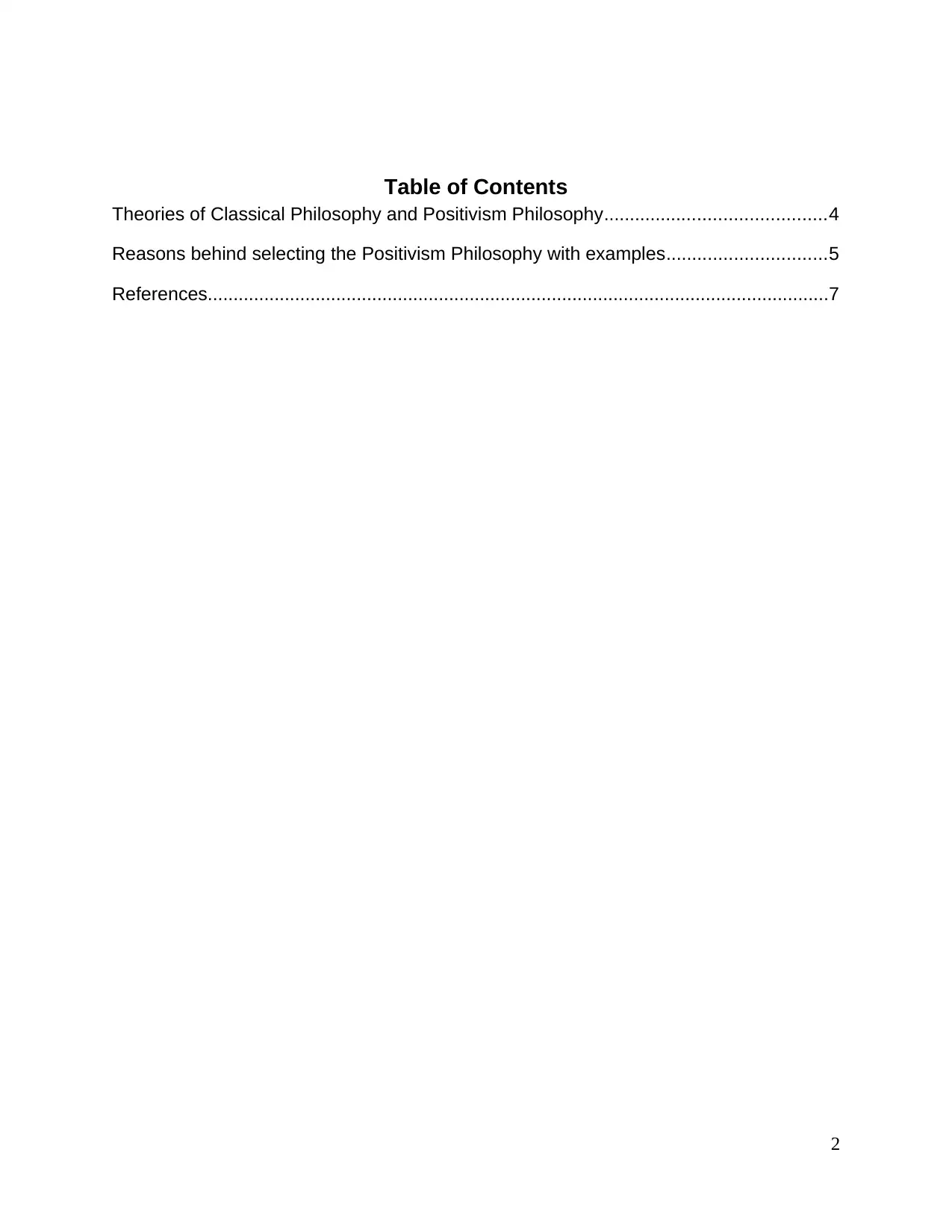
Table of Contents
Theories of Classical Philosophy and Positivism Philosophy...........................................4
Reasons behind selecting the Positivism Philosophy with examples...............................5
References.........................................................................................................................7
2
Theories of Classical Philosophy and Positivism Philosophy...........................................4
Reasons behind selecting the Positivism Philosophy with examples...............................5
References.........................................................................................................................7
2
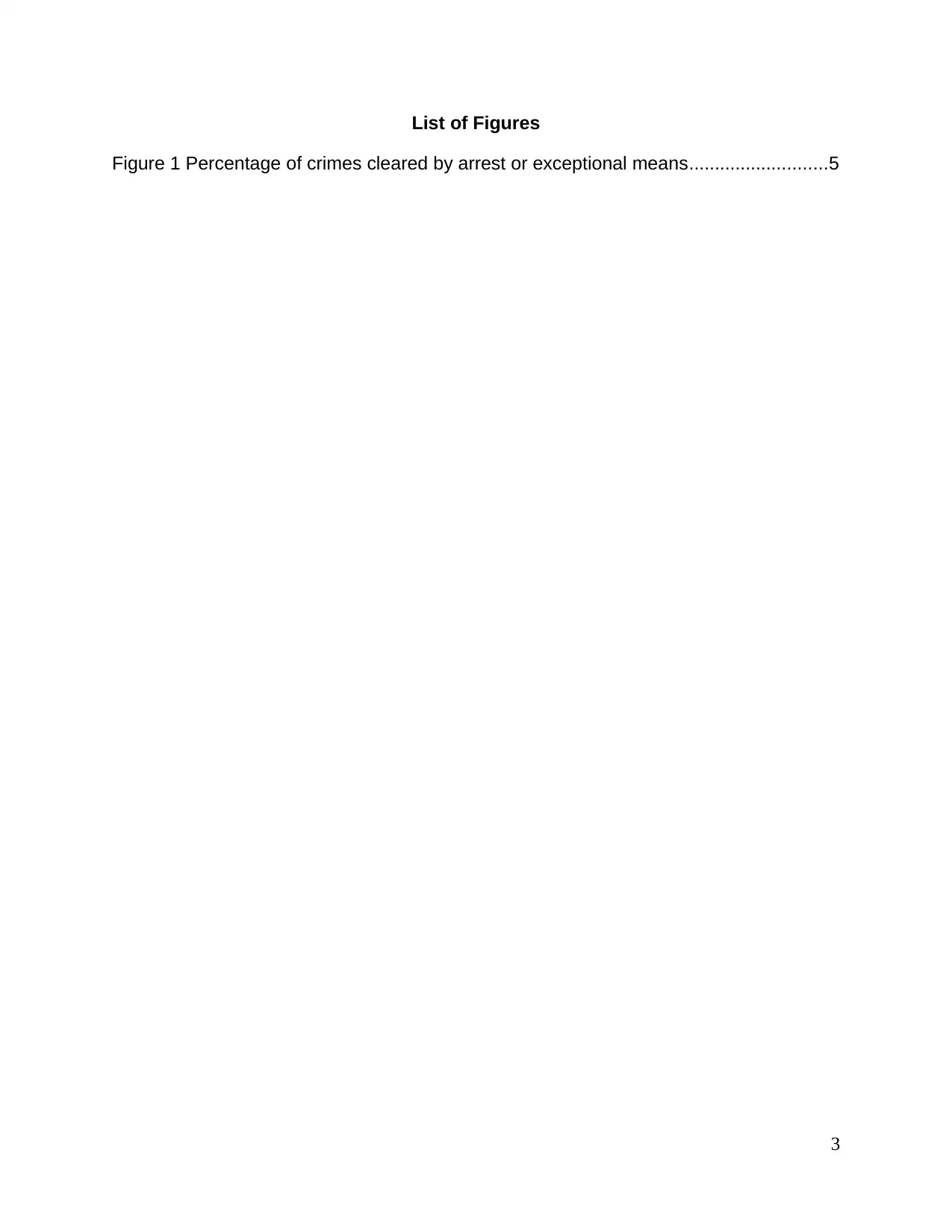
List of Figures
Figure 1 Percentage of crimes cleared by arrest or exceptional means...........................5
3
Figure 1 Percentage of crimes cleared by arrest or exceptional means...........................5
3
⊘ This is a preview!⊘
Do you want full access?
Subscribe today to unlock all pages.

Trusted by 1+ million students worldwide
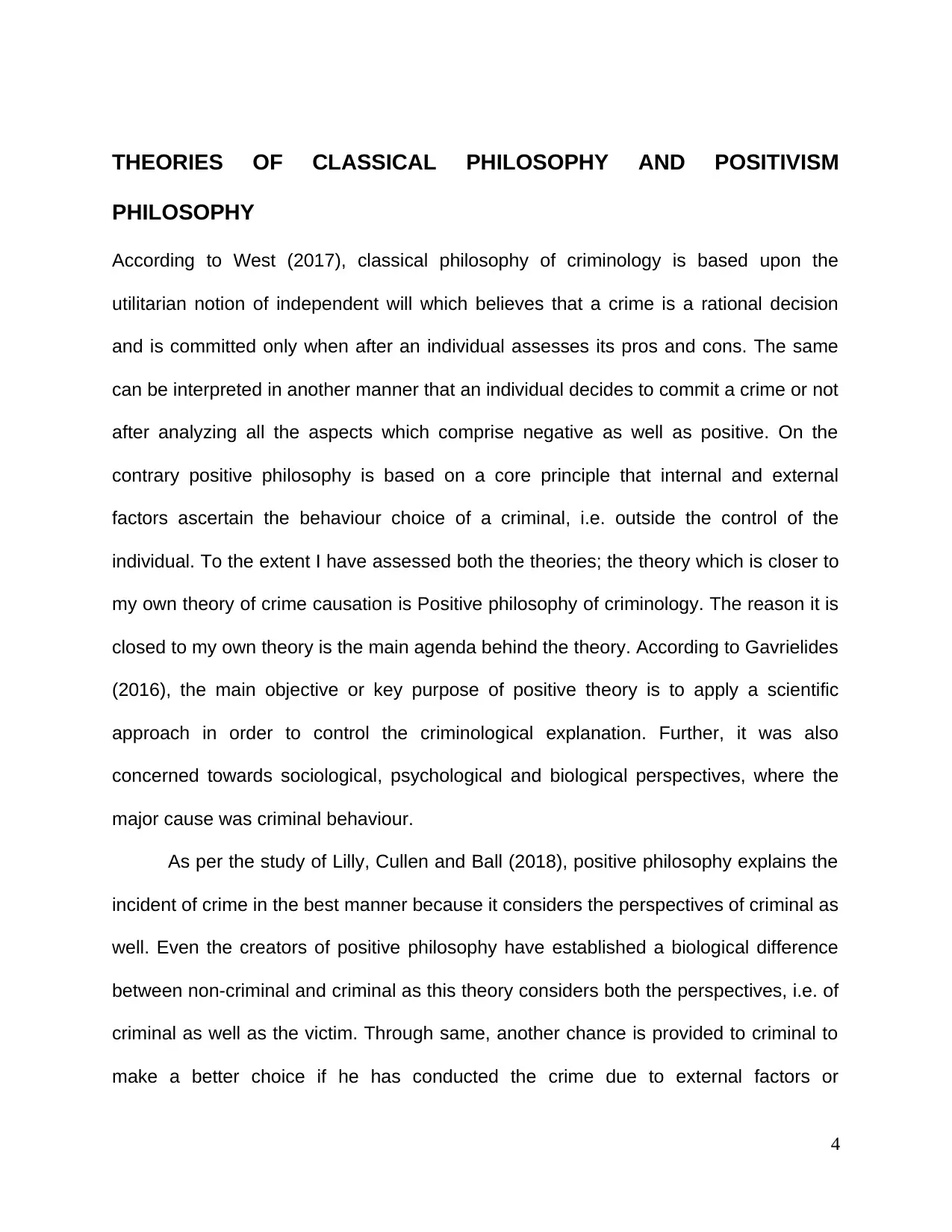
THEORIES OF CLASSICAL PHILOSOPHY AND POSITIVISM
PHILOSOPHY
According to West (2017), classical philosophy of criminology is based upon the
utilitarian notion of independent will which believes that a crime is a rational decision
and is committed only when after an individual assesses its pros and cons. The same
can be interpreted in another manner that an individual decides to commit a crime or not
after analyzing all the aspects which comprise negative as well as positive. On the
contrary positive philosophy is based on a core principle that internal and external
factors ascertain the behaviour choice of a criminal, i.e. outside the control of the
individual. To the extent I have assessed both the theories; the theory which is closer to
my own theory of crime causation is Positive philosophy of criminology. The reason it is
closed to my own theory is the main agenda behind the theory. According to Gavrielides
(2016), the main objective or key purpose of positive theory is to apply a scientific
approach in order to control the criminological explanation. Further, it was also
concerned towards sociological, psychological and biological perspectives, where the
major cause was criminal behaviour.
As per the study of Lilly, Cullen and Ball (2018), positive philosophy explains the
incident of crime in the best manner because it considers the perspectives of criminal as
well. Even the creators of positive philosophy have established a biological difference
between non-criminal and criminal as this theory considers both the perspectives, i.e. of
criminal as well as the victim. Through same, another chance is provided to criminal to
make a better choice if he has conducted the crime due to external factors or
4
PHILOSOPHY
According to West (2017), classical philosophy of criminology is based upon the
utilitarian notion of independent will which believes that a crime is a rational decision
and is committed only when after an individual assesses its pros and cons. The same
can be interpreted in another manner that an individual decides to commit a crime or not
after analyzing all the aspects which comprise negative as well as positive. On the
contrary positive philosophy is based on a core principle that internal and external
factors ascertain the behaviour choice of a criminal, i.e. outside the control of the
individual. To the extent I have assessed both the theories; the theory which is closer to
my own theory of crime causation is Positive philosophy of criminology. The reason it is
closed to my own theory is the main agenda behind the theory. According to Gavrielides
(2016), the main objective or key purpose of positive theory is to apply a scientific
approach in order to control the criminological explanation. Further, it was also
concerned towards sociological, psychological and biological perspectives, where the
major cause was criminal behaviour.
As per the study of Lilly, Cullen and Ball (2018), positive philosophy explains the
incident of crime in the best manner because it considers the perspectives of criminal as
well. Even the creators of positive philosophy have established a biological difference
between non-criminal and criminal as this theory considers both the perspectives, i.e. of
criminal as well as the victim. Through same, another chance is provided to criminal to
make a better choice if he has conducted the crime due to external factors or
4
Paraphrase This Document
Need a fresh take? Get an instant paraphrase of this document with our AI Paraphraser
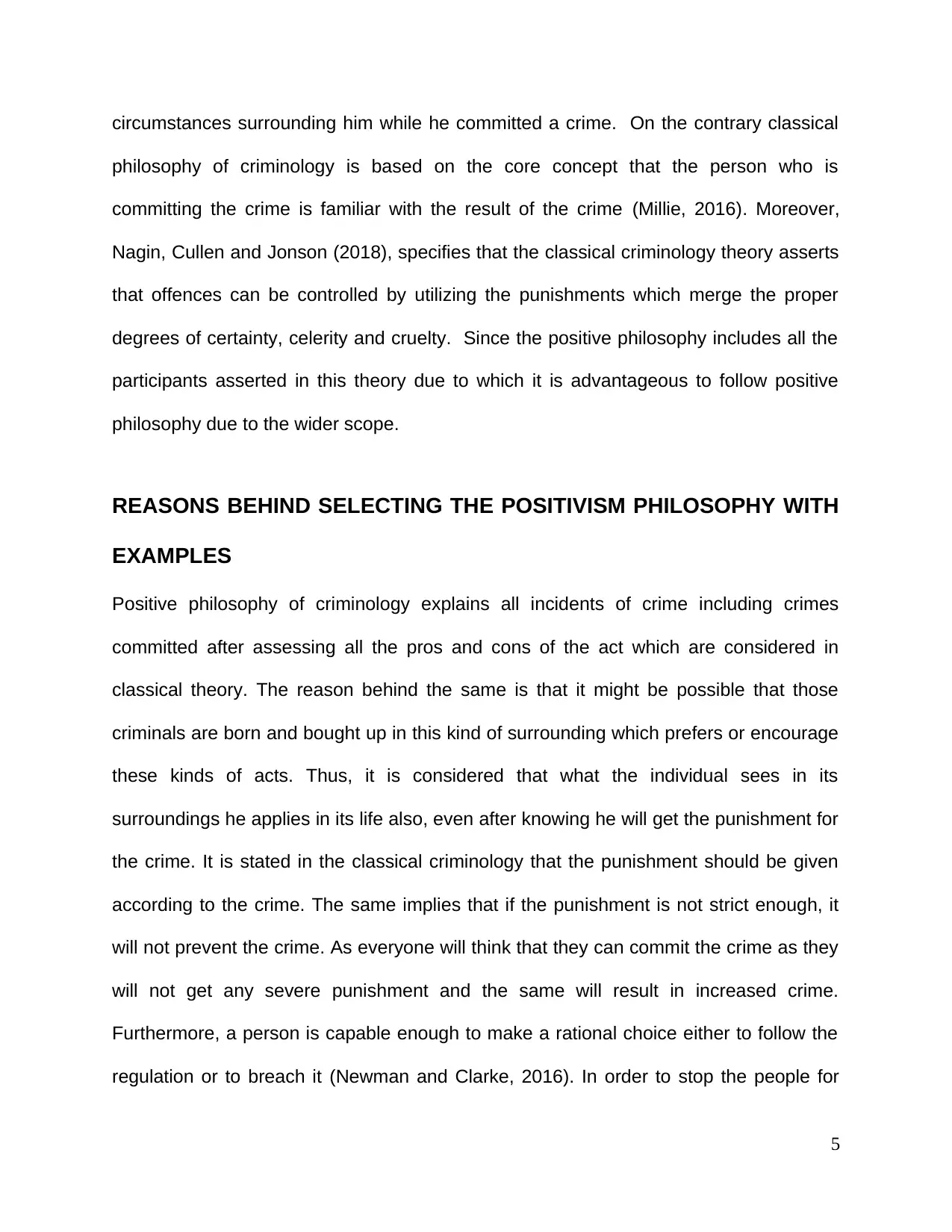
circumstances surrounding him while he committed a crime. On the contrary classical
philosophy of criminology is based on the core concept that the person who is
committing the crime is familiar with the result of the crime (Millie, 2016). Moreover,
Nagin, Cullen and Jonson (2018), specifies that the classical criminology theory asserts
that offences can be controlled by utilizing the punishments which merge the proper
degrees of certainty, celerity and cruelty. Since the positive philosophy includes all the
participants asserted in this theory due to which it is advantageous to follow positive
philosophy due to the wider scope.
REASONS BEHIND SELECTING THE POSITIVISM PHILOSOPHY WITH
EXAMPLES
Positive philosophy of criminology explains all incidents of crime including crimes
committed after assessing all the pros and cons of the act which are considered in
classical theory. The reason behind the same is that it might be possible that those
criminals are born and bought up in this kind of surrounding which prefers or encourage
these kinds of acts. Thus, it is considered that what the individual sees in its
surroundings he applies in its life also, even after knowing he will get the punishment for
the crime. It is stated in the classical criminology that the punishment should be given
according to the crime. The same implies that if the punishment is not strict enough, it
will not prevent the crime. As everyone will think that they can commit the crime as they
will not get any severe punishment and the same will result in increased crime.
Furthermore, a person is capable enough to make a rational choice either to follow the
regulation or to breach it (Newman and Clarke, 2016). In order to stop the people for
5
philosophy of criminology is based on the core concept that the person who is
committing the crime is familiar with the result of the crime (Millie, 2016). Moreover,
Nagin, Cullen and Jonson (2018), specifies that the classical criminology theory asserts
that offences can be controlled by utilizing the punishments which merge the proper
degrees of certainty, celerity and cruelty. Since the positive philosophy includes all the
participants asserted in this theory due to which it is advantageous to follow positive
philosophy due to the wider scope.
REASONS BEHIND SELECTING THE POSITIVISM PHILOSOPHY WITH
EXAMPLES
Positive philosophy of criminology explains all incidents of crime including crimes
committed after assessing all the pros and cons of the act which are considered in
classical theory. The reason behind the same is that it might be possible that those
criminals are born and bought up in this kind of surrounding which prefers or encourage
these kinds of acts. Thus, it is considered that what the individual sees in its
surroundings he applies in its life also, even after knowing he will get the punishment for
the crime. It is stated in the classical criminology that the punishment should be given
according to the crime. The same implies that if the punishment is not strict enough, it
will not prevent the crime. As everyone will think that they can commit the crime as they
will not get any severe punishment and the same will result in increased crime.
Furthermore, a person is capable enough to make a rational choice either to follow the
regulation or to breach it (Newman and Clarke, 2016). In order to stop the people for
5
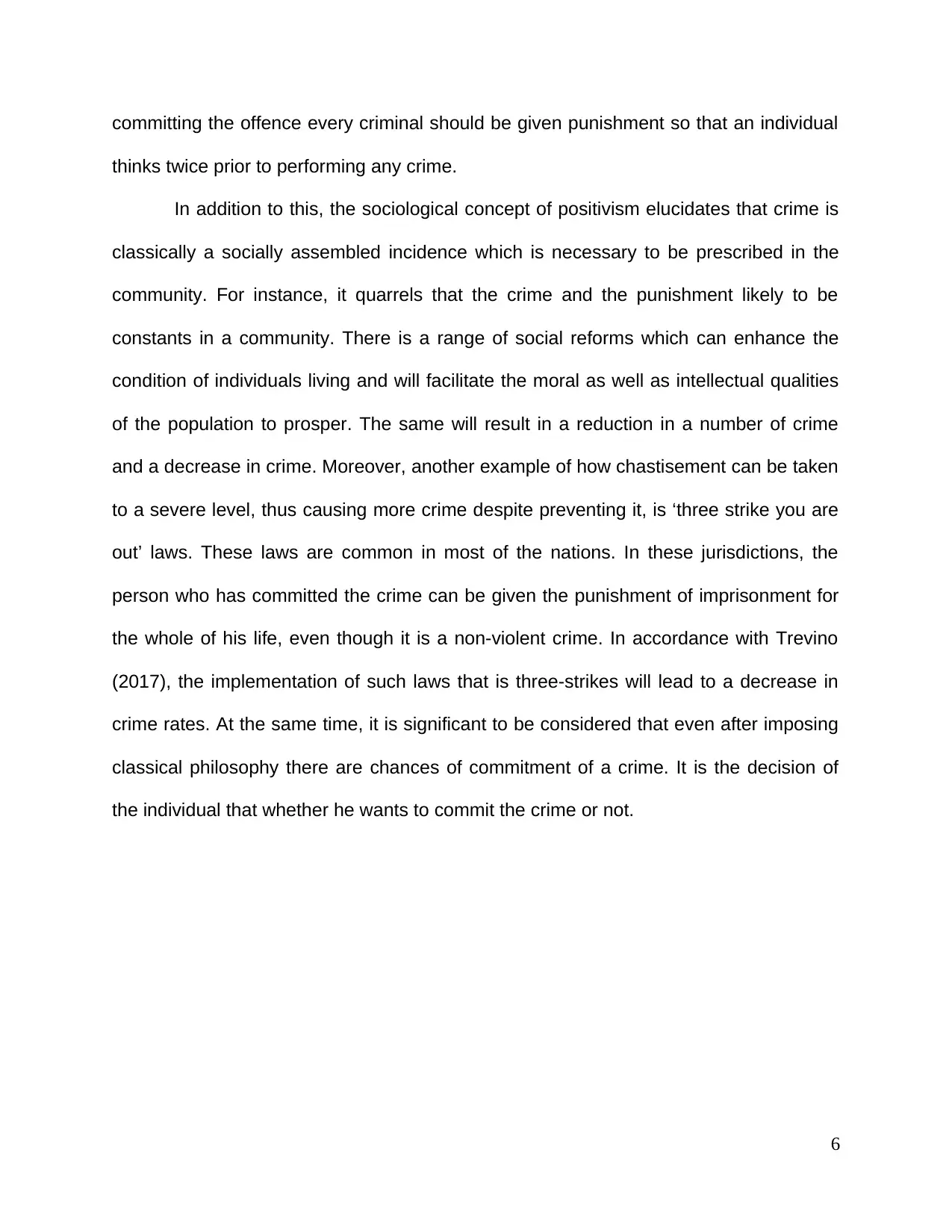
committing the offence every criminal should be given punishment so that an individual
thinks twice prior to performing any crime.
In addition to this, the sociological concept of positivism elucidates that crime is
classically a socially assembled incidence which is necessary to be prescribed in the
community. For instance, it quarrels that the crime and the punishment likely to be
constants in a community. There is a range of social reforms which can enhance the
condition of individuals living and will facilitate the moral as well as intellectual qualities
of the population to prosper. The same will result in a reduction in a number of crime
and a decrease in crime. Moreover, another example of how chastisement can be taken
to a severe level, thus causing more crime despite preventing it, is ‘three strike you are
out’ laws. These laws are common in most of the nations. In these jurisdictions, the
person who has committed the crime can be given the punishment of imprisonment for
the whole of his life, even though it is a non-violent crime. In accordance with Trevino
(2017), the implementation of such laws that is three-strikes will lead to a decrease in
crime rates. At the same time, it is significant to be considered that even after imposing
classical philosophy there are chances of commitment of a crime. It is the decision of
the individual that whether he wants to commit the crime or not.
6
thinks twice prior to performing any crime.
In addition to this, the sociological concept of positivism elucidates that crime is
classically a socially assembled incidence which is necessary to be prescribed in the
community. For instance, it quarrels that the crime and the punishment likely to be
constants in a community. There is a range of social reforms which can enhance the
condition of individuals living and will facilitate the moral as well as intellectual qualities
of the population to prosper. The same will result in a reduction in a number of crime
and a decrease in crime. Moreover, another example of how chastisement can be taken
to a severe level, thus causing more crime despite preventing it, is ‘three strike you are
out’ laws. These laws are common in most of the nations. In these jurisdictions, the
person who has committed the crime can be given the punishment of imprisonment for
the whole of his life, even though it is a non-violent crime. In accordance with Trevino
(2017), the implementation of such laws that is three-strikes will lead to a decrease in
crime rates. At the same time, it is significant to be considered that even after imposing
classical philosophy there are chances of commitment of a crime. It is the decision of
the individual that whether he wants to commit the crime or not.
6
⊘ This is a preview!⊘
Do you want full access?
Subscribe today to unlock all pages.

Trusted by 1+ million students worldwide
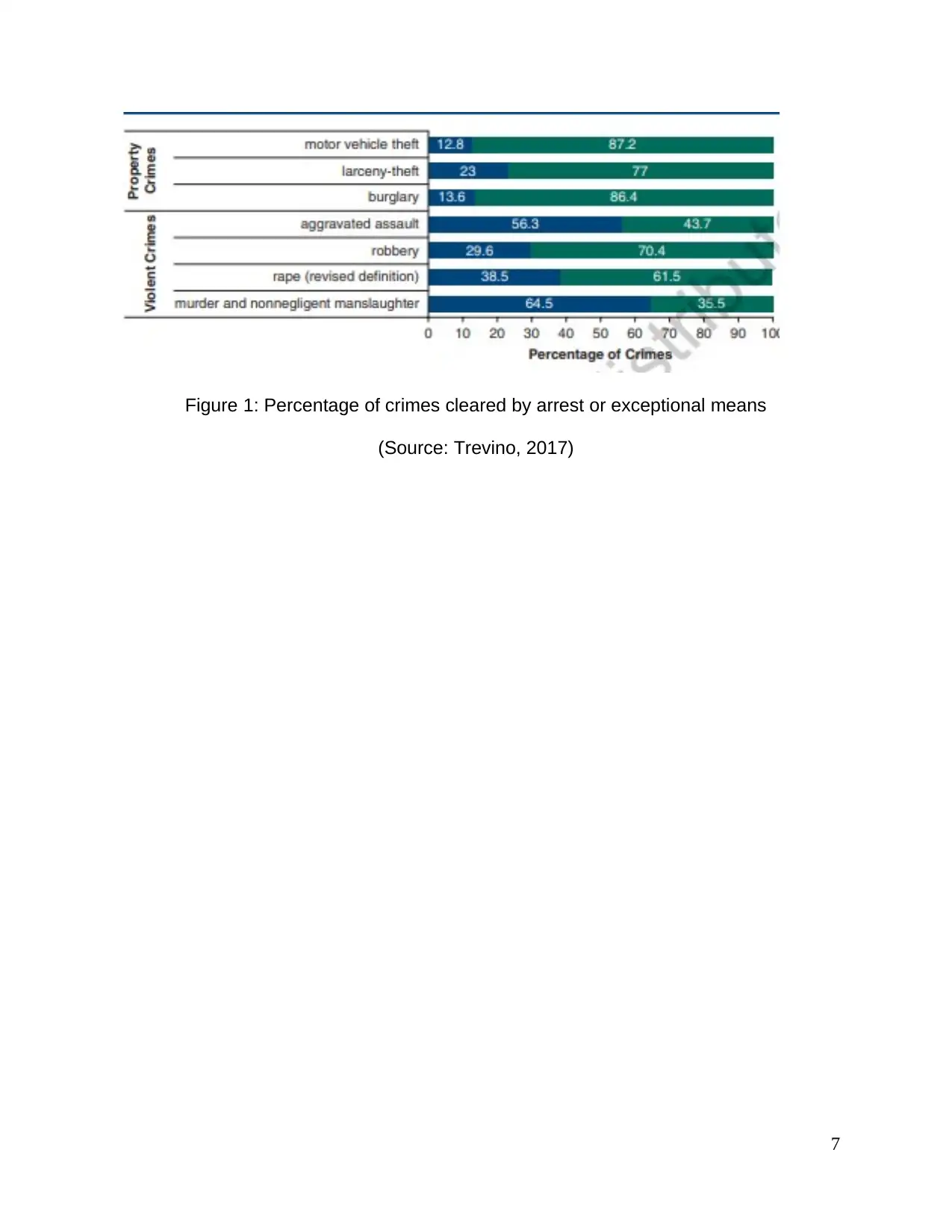
Figure 1: Percentage of crimes cleared by arrest or exceptional means
(Source: Trevino, 2017)
7
(Source: Trevino, 2017)
7
Paraphrase This Document
Need a fresh take? Get an instant paraphrase of this document with our AI Paraphraser
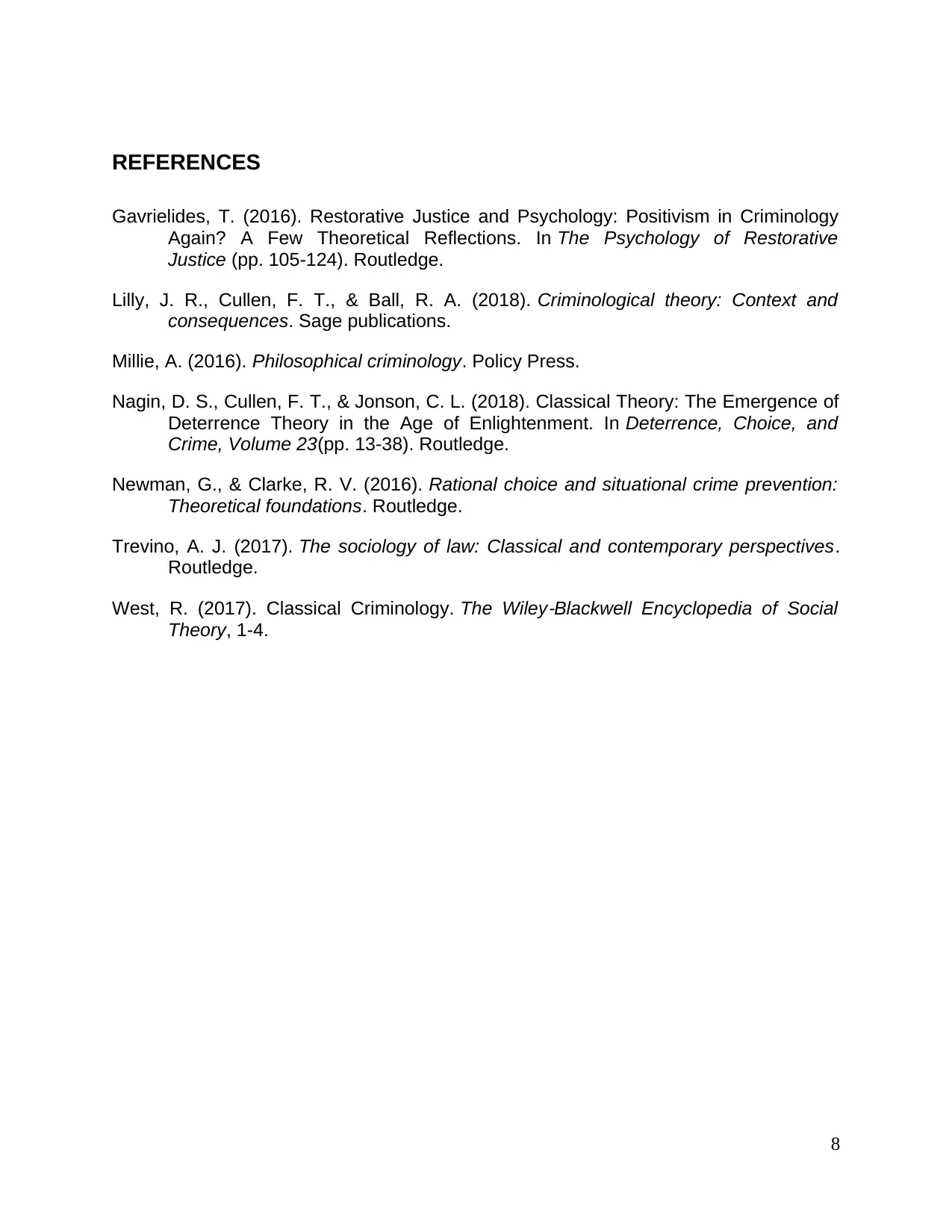
REFERENCES
Gavrielides, T. (2016). Restorative Justice and Psychology: Positivism in Criminology
Again? A Few Theoretical Reflections. In The Psychology of Restorative
Justice (pp. 105-124). Routledge.
Lilly, J. R., Cullen, F. T., & Ball, R. A. (2018). Criminological theory: Context and
consequences. Sage publications.
Millie, A. (2016). Philosophical criminology. Policy Press.
Nagin, D. S., Cullen, F. T., & Jonson, C. L. (2018). Classical Theory: The Emergence of
Deterrence Theory in the Age of Enlightenment. In Deterrence, Choice, and
Crime, Volume 23(pp. 13-38). Routledge.
Newman, G., & Clarke, R. V. (2016). Rational choice and situational crime prevention:
Theoretical foundations. Routledge.
Trevino, A. J. (2017). The sociology of law: Classical and contemporary perspectives.
Routledge.
West, R. (2017). Classical Criminology. The Wiley
‐Blackwell Encyclopedia of Social
Theory, 1-4.
8
Gavrielides, T. (2016). Restorative Justice and Psychology: Positivism in Criminology
Again? A Few Theoretical Reflections. In The Psychology of Restorative
Justice (pp. 105-124). Routledge.
Lilly, J. R., Cullen, F. T., & Ball, R. A. (2018). Criminological theory: Context and
consequences. Sage publications.
Millie, A. (2016). Philosophical criminology. Policy Press.
Nagin, D. S., Cullen, F. T., & Jonson, C. L. (2018). Classical Theory: The Emergence of
Deterrence Theory in the Age of Enlightenment. In Deterrence, Choice, and
Crime, Volume 23(pp. 13-38). Routledge.
Newman, G., & Clarke, R. V. (2016). Rational choice and situational crime prevention:
Theoretical foundations. Routledge.
Trevino, A. J. (2017). The sociology of law: Classical and contemporary perspectives.
Routledge.
West, R. (2017). Classical Criminology. The Wiley
‐Blackwell Encyclopedia of Social
Theory, 1-4.
8
1 out of 8
Related Documents
Your All-in-One AI-Powered Toolkit for Academic Success.
+13062052269
info@desklib.com
Available 24*7 on WhatsApp / Email
![[object Object]](/_next/static/media/star-bottom.7253800d.svg)
Unlock your academic potential
Copyright © 2020–2025 A2Z Services. All Rights Reserved. Developed and managed by ZUCOL.





